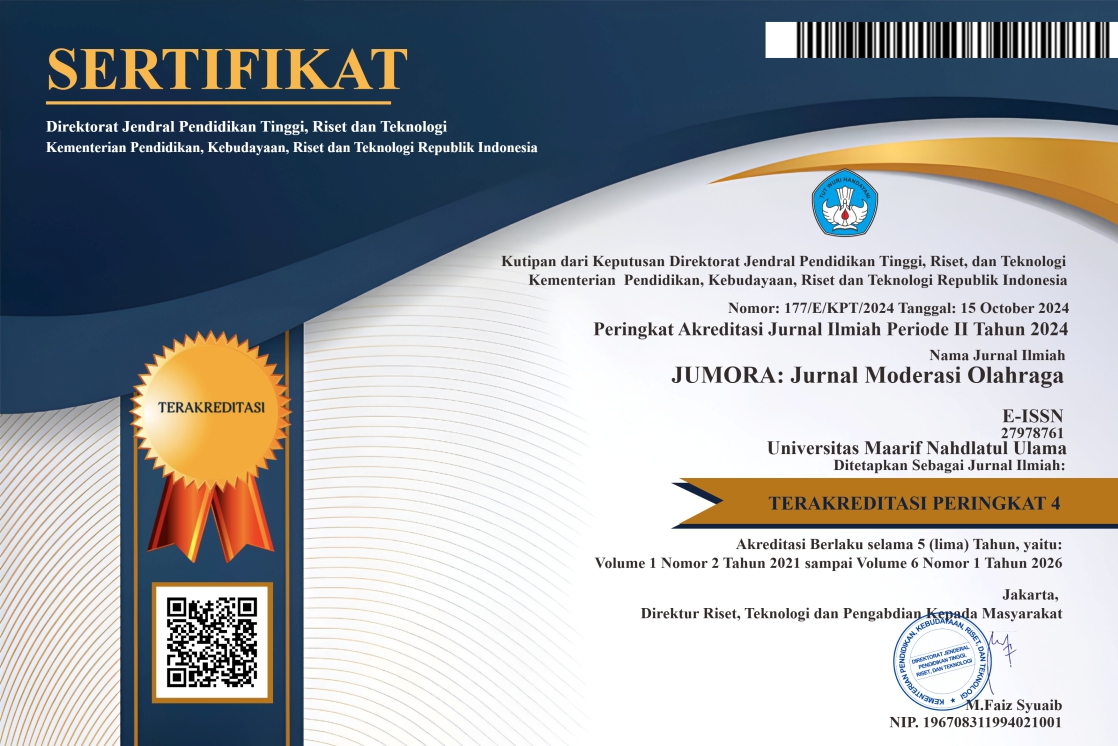Introducing Inclusive Sports Programs in the Educational System of Schools
DOI:
https://doi.org/10.53863/mor.v4i1.1132Keywords:
Inclusion, Sports programs, Socialization, Difficulties, Students.Abstract
This research aims to examine and determine the attitudes, i.e. the interest of teachers, physical and health education teachers, and parents for the introduction of inclusive sports programs in the educational system of schools that would be integrated and available to all students regardless of the abilities, opportunities, individuality of each child as and to difficulty. The research was conducted on a sample of N=426 respondents, of which there were N=370 parents, N=49 teachers, and N=7 physical and health education teachers. For the implementation of this research, a survey method was used through the application of questionnaires/attitude scales for teachers, physical and health education teachers, and parents. We processed the research results using descriptive statistics, frequencies, and percentages and presented them tabularly and graphically. The total number of students in the four elementary schools where the research was conducted is N=1082 students, of which there were N=16 students with developmental disabilities. Of these, 14 students work according to an individual plan and program (IPP), and 13 students have a teaching assistant. Out of a total of N=1082 students, 292 students with typical development attend one of the school sections, and 2 students with developmental difficulties. Parents, teachers, and teachers are in favor of introducing inclusive sports programs into the educational system of schools that would be integrated and accessible to all students, regardless of the abilities, opportunities, and individuality of each child, as well as the difficulty.
References
Baranowski, T., Bar-Or, O., Blair, S., Corbin, C., Dowda, M., Freedson, P., ... & Ward, D. (1997). Guidelines for school and community programs to promote lifelong physical activity among young people. Morbidity and Mortality Weekly Report, 50(RR-6), 1-36.
Bocarro, J., Kanters, M. A., Casper, J., & Forrester, S. (2008). School physical education, extracurricular sports, and lifelong active living. Journal of Teaching in Physical Education, 27(2), 155-166. https://doi.org/10.1123/jtpe.27.2.155
Boras, A. (2019). Self-assessment of teachers' competencies for working with students with developmental disabilities, Master's thesis, Zagreb: University of Zagreb.
Doulkeridou, A., Evaggelinou, C., Mouratidou, K., Koidou, E., Panagiotou, A., Kudlacek, M. (2011.). Attitudes of Greek Physical Education Teachers towards Inclusion of Students with Disabilities in Physical Education Classes. International Journal of Special Education, v26 n1: 1-11. https://eric.ed.gov/?id=EJ921174
Freer, J. R. R. (2023). Students’ attitudes toward disability: A systematic literature review (2012– 2019). International Journal of Inclusive Education, 27(5), 652–670. https://doi.org/10.1080/13603116.2020.1866688
Hayman, L. L., Williams, C. L., Daniels, S. R., Steinberger, J., Paridon, S., Dennison, B. A., & McCrindle, B. W. (2004). Cardiovascular health promotion in the schools: A statement for health and education professionals and child health advocates from the Committee on Atherosclerosis, Hypertension, and Obesity in Youth (AHOY) of the Council on Cardiovascular Disease in the Young, American Heart Association. Circulation, 110(15), 2266-2275. https://doi.org/10.1161/01.CIR.0000141117.85384.64
Jerlinder, K., Danermark, B., Gill, P. (2009). Swedish primary?school teachers’ attitudes to inclusion – the case of PE and pupils with physical disabilities. European Journal of Special Needs Education, 25:1: 45-57. https://www.tandfonline.com/doi/abs/10.1080/08856250903450830
Jurak, G., Kova?, M. & Strel, J. (2006). Impact of the additional physical education lessons program on the physical and motor development of 7- to 10-year-old children. Kinesiology, 38 (2.), 105-115. Preuzeto s https://hrcak.srce.hr/9070
Karamati? Br?i?, M. (2012). Implementation and implementation of inclusive education in the system of regular schools. Magistra Iadertina, 7 (1), 101-109. Preuzeto s https://hrcak.srce.hr/99895
Kobeš?ak, S. (2000). Što je inkluzija?. What is inclusion? Child, kindergarten, family, 6 (21), 23-25. Retrieved from https://hrcak.srce.hr/183411
Luepker, R. V., Perry, C. L., McKinlay, S. M., Nader, P. R., Parcel, G. S., Stone, E. J., Webber, L. S., Elder, J. P., Feldman, H. A., & Johnson, C. C. (1996). Outcomes of a field trial to improve children's dietary patterns and physical activity. The Child and Adolescent Trial for Cardiovascular Health. CATCH collaborative group. JAMA, 275(10), 768–776. https://doi.org/10.1001/jama.1996.03530340032026
Penney, D., Jeanes, R., O'Connor, J. I Alfrey, L. (2018) Re-theorising inclusion and reframing inclusive practice in physical education, International Journal of Inclusive Education, 22:10, 1062-1077. https://doi.org/10.1080/13603116.2017.1414888
Rodriquez, J., Lanser, A., Jacobs, H. E., Smith, A., & Ganguly, S. (2022). When the Normative Is Formative: Parents' Perceptions of the Impacts of Inclusive Sports Programs. International journal of environmental research and public health, 19(17), 10889. https://doi.org/10.3390/ijerph191710889
Steinbeck K. S. (2001). The importance of physical activity in the prevention of overweight and obesity in childhood: a review and an opinion. Obesity Reviews an official journal of the International Association for the Study of Obesity, 2(2), 117–130. https://doi.org/10.1046/j.1467-789x.2001.00033.x
Story M. (1999). School-based approaches for preventing and treating obesity. International journal of obesity and related metabolic disorders: journal of the International Association for the Study of Obesity, 23 Suppl 2, S43–S51. https://doi.org/10.1038/sj.ijo.0800859
UNESCO (2005). Guidelines for Inclusion; Ensuring Access to Education for All. http://unesdoc.unesco.org/images/0014/001402/140224e.pdf
Weiss, M. R., & Ferrer, C. E. (2002). Motivational orientations and sports behavior. In T. S. Horn (Ed.), Advances in sport psychology (pp. 101-183). Human Kinetics.
Downloads
Published
How to Cite
Issue
Section
License
Copyright (c) 2024 Elvira Nikši?,Ajla Bukva

This work is licensed under a Creative Commons Attribution-ShareAlike 4.0 International License.
Authors retain copyright and grant the journal right of first publication with the work simultaneously licensed under a Creative Commons Attribution-ShareAlike 4.0 International License that allows others to share the work with an acknowledgment of the work’s authorship and initial publication in this journal











